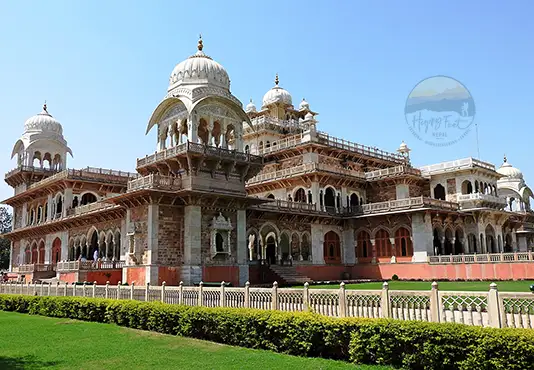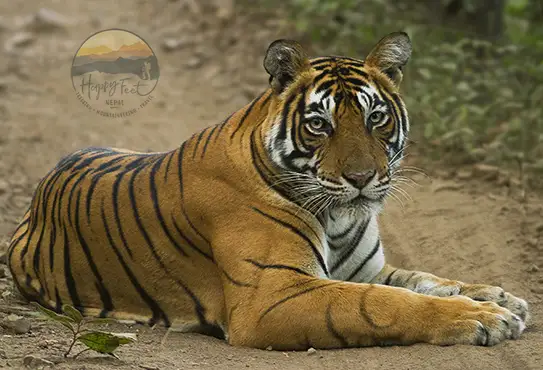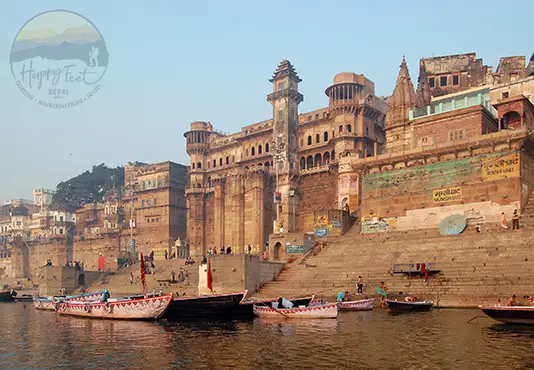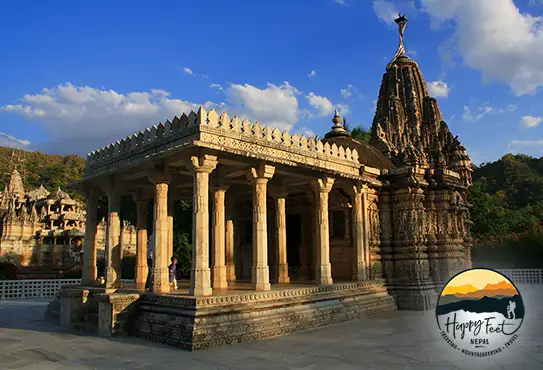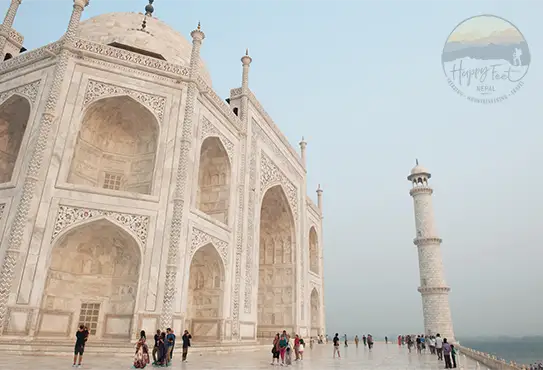-
Sunday - Friday: 9 AM - 4 PM
Explore the heritage of Delhi, the Taj Mahal of Agra, and the rich culture of Jaipur in Golden Triangle Tour 6-Days. Experience iconic sites, local flavours, and unforgettable architectural wonders in India’s heart cities. The tour concludes with visits to the Amber Fort, City Palace, and Hawa Mahal, leaving lasting memories of a cultural experience.
TheGolden Triangle Tour 6-day , covering Delhi, Agra and Jaipur, is a meaningful journey through the heart of India. This short tour itinerary offers a valuable opportunity to delve into the diverse culture and history of the timeless iconic cities along the way. Your journey begins with a warm welcome at the Delhi airport by a Happy Feet Mountaineering representative.
From day 2, the guided tour begins diving into the heritage of Old and New Delhi. Experience the pulsating energy of Old Delhi with a rickshaw ride past the majestic Red Fort and the serene Bangla Sahib Gurudwara, where you can see and sense the profound devotion of its visitors. You will also explore the grandeur of the Great Jama Masjid and have the chance to savour local flavours during lunch. Transition to New Delhi, where you will marvel at the architectural brilliance of Humayun Tomb, India Gate, and the Qutub Minar, a UNESCO World Heritage Site.
On the third day, travel to Agra, home to the incredible Taj Mahal. After exploring the Taj Mahal, a timeless symbol of love, you will visit the Agra Fort, a UNESCO World Heritage site, and later have the opportunity to explore the famous marble factories.
Continuing your journey, visit the historic Fatehpur Sikri, a sample of Mughal architecture, before reaching the “Pink City” of Jaipur. The rich historical and traditional significance, along with the colourful local markets and architectural wonders of Jaipur, allure all kinds of visitors.
Your adventure culminates in Jaipur, where a visit to the Amber Fort, the City Palace, and the extraordinary Hawa Mahal reveals the royal heritage of this city. Conclude your tour with a journey back to Delhi, carrying unforgettable memories of the breathtaking cultural and historical landscapes in mind and heart.
Arrive at Delhi Airport, customs and immigration formalities and claim your baggage, which takes some time. Upon exiting the arrivals get a traditional welcome from the Happy Feet Mountaineers representative and transfer to the hotel (room check-in is available from noon). Rest of the day at leisure
Morning breakfast at the hotel. Later, a full-day Visit to Old and New Delhi. Visit Old Delhi in Ricksaw. Starting the drive past Red Fort, visit the Bangla Sabih Sikh Temple and observe the fervour with which the Brotherhood members listen to the Book reading. Then, visit the Great Jamma Masjid Mosque, built by the Shah Jahan, rising in the middle of the old city of Old Delhi. Lunch at a local restaurant.
In New Delhi, we pass through the Rajpath. We visit Humayun Tomb, the city Edwin Lutyens built to be the British capital in the so-called Anglo-Indian style, and the India Gate memorial erected in honour of the soldiers who died during various wars. We also visit the Parliament Building, the Presidential Palace, and the ministries. Later, visit the Qutub Minar, the oldest monument in Delhi, which was declared a UNESCO World Heritage Site in 1993.
This morning we will continue to Agra, either by road or air-conditioned train, schedules permitting. Arrive at Agra and check into the hotel. Free time for lunch and visit Agra, including Red Fort –and Marble factory. The imposing Red Fort, or red sandstone Agra Fort, was principally erected as a military establishment by Akbar in 1565, when he was just 23, and was partially converted into a palace during Shah Jahan’s time. Within the Fort are several fascinating buildings, including the Octagonal Tower, the Jehangir Palace built by Akbar for his son Jehangir, and the Pearl Mosque made of marble. Then there is the Hall of Public Audience, best known for its Peacock Throne and white marble-built private palace known as the Khas Mahal. Agra is also famously known as the city of Marble; therefore, visit its marble factories. This evening one can explore the markets of Agra on foot and buy souvenirs for families. Overnight at Hotel Siri 18 or Maple Grand, a 3-star hotel, breakfast included.
This morning we take a sunrise visit to the main attraction of Agra: The Taj Mahal, one of the world’s most beautiful buildings. Called “A dream in marble,” the Taj Mahal was built by Shah Jah as a memorial to his queen Mumtaz Mahal. Shah Jah built the Taj to enshrine the body of his favourite wife, Mumtaz Mahal (the elect of the palace), who died shortly after the birth of their 14th child in 1631. The Taj Mahal – often described as the most extravagant monument ever built monument of love constructed by 20,000 men from Asia commenced in 1632 and was completed in 1653. The marble used for the memorial was sourced from Makrana, near Jodhpur, and precious stones, including amethyst, malachite, onyx, lapis lazuli, turquoise, jade, crystal, and mother-of-pearl, were imported from Persia, Russia, Afghanistan, Tibet, China, and the Indian Ocean. The Taj Mahal is located at the banks of the river Yamuna, reflecting her in the waters of Yamuna, and you can look at it from nearby Agra Fort.
Finalize the visit, return to the hotel for breakfast, and transfer to Jaipur by road. En route, visit the Fatehpur Sikri, built by the 28 Year young Emperor Akbar on a rocky ridge. Unfortunately, Akbar had no son or heir to his vast empire. Desperate for not having an heir, he decided to see a Muslim holy man, Salim Chisti, who blessed Akbar. Therefore, the emperor had a long-awaited son, whom he named Mohamad Salim, in honour of the Muslim saint. Salim would one day take the throne from Jahangir. Akbar was so thrilled that he decided to move his Royal court from Agra to Fatehpur Sikri in gratitude and to affirm faith, hope and joy, where he died in 1569. Fatehpur Sikri stands on a rocky ridge for 2 miles. Walking through the Fatehpur Sikri’s empty palaces, one cannot but be transported back 400 years and visualize the glory and the splendour that must have existed.
After the visit continue your drive to Abhaner and visit without a guide, originally called Abha Nagri, which means “The Shining City”. Abhaner has “Baoris” (stairwells), which are the invention of the natives to collect rainwater. Finalize the visit and continue your drive to Jaipur, known as the Pick City. Arrive at Jaipur and check into your hotel.
Jaipur, known as the Pick City, the capital of Rajasthan, still seems cradled and well-protected. Jaipur is named after Maharaja Jai Singh, who became King of Amber in the early 1700s at the age of thirteen. Despite his precocious age, he was a distinguished student, adding to his credentials the careers of architecture and astronomy. He designed the new capital with exquisite pink terracotta buildings, which earned it the nickname “Pink City” due to its predominant colours of pink and orange; the sunset effect is magical.
For the rest of the afternoon, you can explore the city and visit the local market without a guide.
Breakfast at the hotel. Later, visit the Amber Fort, stunningly situated on a hillside overlooking a lake, 11km from Jaipur. Amber was the capital of Rajasthan for six centuries and the core land of Rajput history. Nowadays, the city is practically abandoned. The objective of the visit is to see and admire its imposing palace. The palace stands on the steep hill slope behind Maota Lake, retaining an air of great beauty. The visit to the palace can be made on foot, by Jeep, or by elephant-back safari, which is the most preferred option. The construction of the Palace/Fort was initiated in the 1592s by Raja Man Singh, the Rajput commander of Akbar’s army and later extended and completed by Jai Singh. The “Hall of Public Audience,” with a double row of columns and latticed galleries, is reached by an imposing stairway. The Fortress also contains a temple with doors made of Silver dedicated to Goddess Kali. Next, walk over to the Hall of Victory, noted for its inlaid panels and glittering mirror ceiling. The “Hall of Pleasure” is on the opposite side with an ivory-inlaid sandalwood door, and the “Hall of Private Audience” is extraordinary with exquisite murals. However, the highlight of the Fort is the “Hall of Mirrors”, whose interior is encrusted with tiny mirrors, sparkling like a diamond in candlelight. The oldest part of the palace is Raja Man Singh’s apartments, where each of his dozen wives had a separate suite.
Afternoon: Tour of Jaipur City. Jaipur city is a living testament to one of the most remarkable rulers of his age, Jai Singh II, a highly talented ruler in politics and warfare. However, the credit for the pinkness of the city goes to Maharaja Man Singh, who dressed up the city in the welcoming symbolic colour following the visit of the Prince of Wales and, later, Edward VII, who visited Jaipur in the 1876s.
The City Palace and Museum visit comprises several courtyards, gardens, and buildings that blend Rajasthani and Mughal architecture. The former Maharaja still resides in one of its wings, dating back to the 18th century, and features a blend of Rajput and Mughal styles. The museum contains an extensive collection of art, miniature paintings, carpets, costumes and dresses, enamelware, old weapons, and an armoury of guns and swords. The Jantar Mantar, a renowned astronomical observatory built in 1728 by Jai Singh, and Hawa Mahal, also known as the Palace of the Winds, constructed in the 1790s, are Jaipur’s most famous monuments of Rajput architecture. Hawa Mahal consists of 5 floors, of which only the multi-windowed façade remains.
Note: The Archaeology department has limited the number of trips and times to Amber Fort by elephant, so it is possible that Amber Fort may not be accessible on the day of the visit, and we will have to access it by Jeep instead. Therefore, an elephant-back tour cannot be guaranteed.
Breakfast at the hotel. Later drive to Delhi followed by a visit to Nahargarh Fort. The Nahargarh Fort, on the hill ridge above Jaipur city, was built by the king of Jaipur, Maharaja Sawai Jai Singh, in 1734 as a place of retreat and served as a hunting residence of the Maharajas. The Fort’s walls extend the surrounding hills and connect to the Jaigarh fort, creating an unbreakable fortification of its time. Historically, the Fort never came under attack, but the Maratha force and Jaipur treaty were signed in the Nahargarh Fort in the 18th century. The European dignitaries, wives and families of the British Residency were moved here by the Sawai Ram Sing, the King of Jaipur, for protection. Later, the Sawai Ram Singh built several palaces at Nahargarh, and Sawai Madho Singh built Madhavendra Bhawan with suites for the queens of Jaipur and the king himself. The rooms have delicate frescoes and are linked to each other by corridors. The Nahargarh Fort served until 1944 for official purposes of the Jaipur State government. After the visit continue your drive to Delhi for 5 hours.
Arrive in New Delhi and free time to enjoy shopping in the bustling markets of Delhi. In the evening, we farewell you and transfer you to the airport, check-in formalities, pass through immigration and depart for your onward destination.
